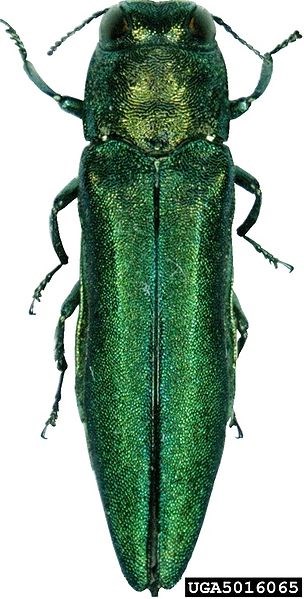
Courtesy of the University of Georgia The Emerald Ash Borer Threat at JNEM The emerald ash borer is a species of insect not native to the In addition to its normal mobility, the insect can also hide and travel in firewood transported from place to place.People can assist conservation agencies in containing the ash borer by not moving firewood from one locality to another. On the Arch grounds we have a large planting of over 900 ash tree cultivars, the Rosehill ash, located along the walks that lead to the Arch from the north and the south.The Rosehill ash comprise about 46% of the trees on the Arch grounds.After consultation with a number of landscape architects, arborists, entomologists and other experts we have decided that total removal of the ash trees is the best solution to the problem.Applications of pesticides and other alternatives have been considered, but current alternatives are not 100% effective and are very expensive for such a large planting. Removal of the trees was the solution recommended as part of the winning design in the recent architectural competition, and we have been working with the winning firm, Michael Van Valkenburgh Associates (MVVA), to select a replacement tree and improve conditions along the walks as part of their final design plan. The project will also attempt to solve problems associated with the growth of the trees, which include the small tree pits they are planted in, poor drainage, tree grates, and other aspects of the original planting.MVVA agrees with the National Park Service and historic preservationists that the walks leading to the Arch need to consist of a single species planting in order to preserve the character-defining features and the original design intent of this unique landscape. The overall numbers of the single-species tree throughout the grounds will be reduced.Currently, some outlying trees, as well as trees located along The suggestions for the final replacement species for the areas bordering the curved walks have been reduced to eight, and the final choice will be decided upon by MVVA in consultation with the National Park Service, top arborists, soil experts, and preservationists to ensure that a hardy, disease-resistant, attractive, shade bearing and low maintenance tree is selected.It is too early at this time to know which of the eight trees on the short list will be selected.A great deal of research on each tree will be undertaken before a final decision is made. |
Last updated: April 25, 2019

